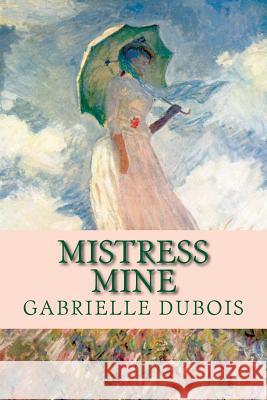Mistress Mine » książka
Mistress Mine
ISBN-13: 9781530834327 / Angielski / Miękka / 2016 / 388 str.
In 1876, Louise St Quentin was sixteen. She was an orphan and the rich owner of a huge estate. Her future seemed all mapped out; a marriage of convenience would be arranged for her so that she would have someone to help her manage her estate. But Louise had the rather unfortunate tendency of listening to her heart rather than her reason. The end of the nineteenth century was terribly exciting, and Louise wanted to discover everything - the adventure lying at the end of the railway track, romantic music, the modern cuisine in the new Parisian restaurants, and impressionist painting. Was her artistic, cultural and above all sensual upbringing going to lead the young girl to her ruin or to love? A native of the Selle valley, would Louise find the grass greener on the other side of the world? A word by Jane Hentges, the translator It was so exciting when, after sending emails to each other for a couple of weeks, Gabrielle Dubois contacted me on Mothering Sunday to tell me that she had chosen me to translate the first volume of her Louise Saint Quentin saga Mistress Mine (Sous les Eucalyptus in French). It was a wonderful, totally unexpected mothering day present. After teaching English literature and translation in a French university for twenty years, here I was confronted with a real challenge - and some challenge Such simple things at first sight as Monsieur, Madame and Mademoiselle turned out to be amazingly difficult to translate, as ways of addressing people at different periods in time, in different social classes and in different countries are not the same and not only is the novel is set in the 19th century but the heroine, Louise, travels all over the world The fact the novel is set in the 19th century also creates numerous other difficulties of a more technical nature. For example, it would have been so simple if young girls had worn tee shirts and jeans at the time but this was far from being the case. They wore very sophisticated, elaborate clothes, especially in the upper-class circles which Louise moves around in, and Gabrielle Dubois obviously studied the fashion of the time in detail. In fact the whole novel is extremely well documented. The novel, however, was a real pleasure to translate as it is so pleasant to read. The reader can't help getting attached to the heroine and all the men who cross her path during her travels. Louise Saint Quentin not only becomes their much desired "Mistress Mine" but she is above all her own "Mistress Mine" as she has to learn all about life and how to fend for herself from a very early age, something unusual for a girl at the time. The numerous, often pithy, dialogues throughout the novel show her personality and how it evolves. They bring both Louise and the other characters to life and together with all the little, well-observed details, create "a reality effect." In a word, Mistress Mine is a good read as we are drawn into the novel from the start and find it hard to put down. Although we are rather sad to get to the end, we know there are other volumes of the saga in store and we can't wait to read them as we know very well that Louise's journey through life is in its early stages and that Mistress Mine is just the beginning.
Zawartość książki może nie spełniać oczekiwań – reklamacje nie obejmują treści, która mogła nie być redakcyjnie ani merytorycznie opracowana.











